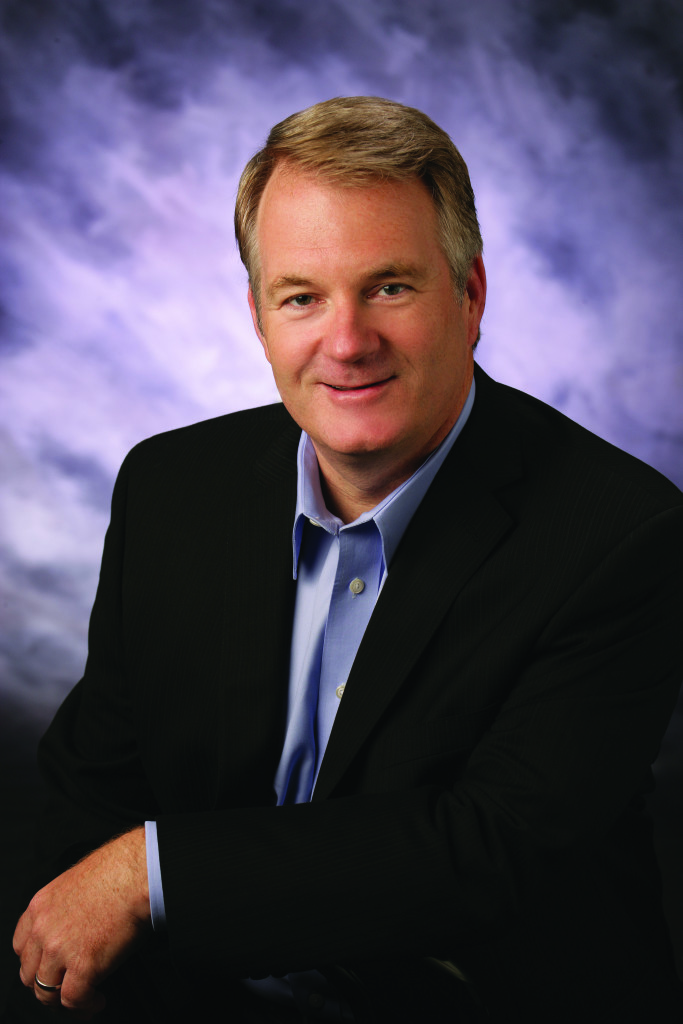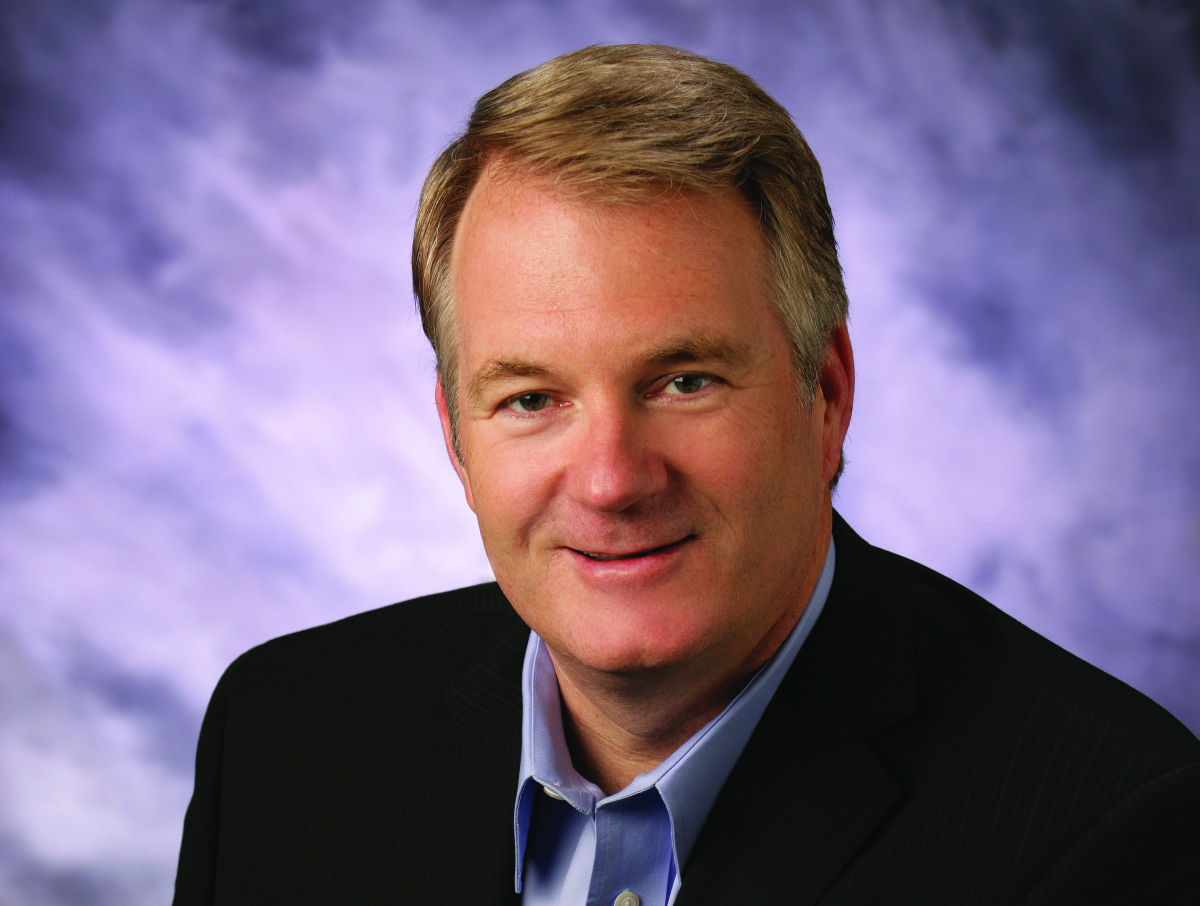INSIDE SCOOP: DOUG EWERT ON THE FUTURE OF TAILORED BRANDS


After last week’s tough conference call at which he had to articulate plans to rebound from a fourth quarter sales decline of $1.1 billion, Tailored Brands president and CEO Doug Ewert sat down with MR for an exclusive look at the future of Jos. A. Bank, Men’s Wearhouse and the entire Tailored Brands operation.
MR: From a merchandising rather than an operations viewpoint, what are your plans for Jos. A. Bank and how is this niche different from Men’s Wearhouse?
DE: First of all, Men’s Wearhouse is a house of brands: we sell a lot of labels targeted to a broader demographic because MW generally attracts customers on the fashion spectrum. Jos. A. Bank, on the other hand, is a brand that speaks to a traditional classic customer. Here, we take a more lifestyle approach.
That said, we see tremendous opportunity to improve the assortment for this classic customer and we’re already seeing positive results from recent changes. For example, last year we dramatically expanded the shoe collection with very strong results. We introduced a new collection targeting a younger traditional customer to expand the demographic appeal of the Bank’s brand. It’s called 1905, which is the year Jos. A. Bank was established; it’s designed by Joseph Abboud and it’s selling well. We’re also updating assortments and balancing inventory by fit: Bank carries three different fits—classic, tailored and slim—and we’re moving more inventory into tailored and slim, a move that’s beginning to pay dividends. Finally, we see opportunity to speak to a more affluent consumer in the traditional space so we’re bringing in a collection at more premium pricepoints, made in our U.S. factory using high-quality fabrics, canvas construction, etc. We’ll also offer custom in clothing and dress shirts.
MR: You’ve said your transition away from unsustainable promotions at Bank has proven “significantly more difficult than you expected”, yet you’re saying you want to target a more upscale customer. Is there not a disconnect here?
DE: I don’t see a contradiction. I would point to Men’s Wearhouse as an example: we’re still promotional; moderate menswear is a very promotional business in this country and consumers respond to these calls to action. That said, we’ve continued to grow the premium part of their business. The Abboud brand has grown to 20 percent of the MW mix in just a year and a half; these are canvas constructed suits in Biella fabrics made in the USA at $500 and up. Men’s Wearhouse is experiencing notable growth by increasing that piece of the business and attracting a premium customer.
Bank, on the other hand, hasn’t really spoken to that customer in the past. Although in general the Bank customer is more affluent, the average OTD Bank suit is below the average MW suit and Bank’s business in suits over $500 is negligible. The good news: there’s much opportunity for growth.
MR: Which division does more business in tailored clothing?
DE: Tailored (suits and sportcoats) generates 45-50 percent of the business at Bank and 50-55 percent at Men’s Wearhouse. The goal for Bank is not necessarily to change the ratio but rather to expand the demographic of our overall brand and then gain a larger share of our customers’ closets. With the continued casualization of the workplace, sportswear and business casual should continue to grow, as will our business with millennials.
MR: As you look to cut expenses, have you considered merging the two divisions, or maintaining both nameplates but merging the buying teams?
DE: No chance: we’re absolutely keeping them separate; each brand has to be unique and distinct. Of course, there are synergies on the back end: we can use the same factories; we can buy fabrics from the same mills. But from a brand integrity standpoint, each brand has its own DNA and we think it’s very important to maintain this distinction. We do a lot of consumer research and it’s interesting that the Bank customer perceives the brand as luxury. At the same time, they see the Men’s Wearhouse brand as moderate, and not a place where they would shop. In other words, the Bank customer is essentially a Men’s Wearhouse brand rejecter. So while the math would look fabulous, putting them together in the same box, or carrying Bank as a brand within Men’s Wearhouse stores, wouldn’t work. Customers would reject that.
MR: Could you explain the rationale for carrying Joseph Abboud clothing in both MW and Bank if the DNAs are so distinct?
DE: The brand is in both stores but it’s a different assortment bought by different buying teams. That said, we will be migrating the Joseph Abboud product at Bank to Reserve now that we better understand how our premium customers value the strength of Bank brand. We think we can combine the best of both worlds: having Joseph Abboud design a Bank collection and tying it into a premium Bank brand.

DE: The payroll cuts you read about were in the offices, not in the stores. Our sellers are still on commission and our stores are still well staffed. Having an engaged selling force is our strategic advantage: we certainly don’t want to do anything to lose that. Our other major advantage is in-store tailors. This is more important than ever because there are now numerous fits in tailored clothing, whereas five years ago, there was essentially one fit. Since few moderate department stores even have tailors any more, we’re the last bastion for getting a perfect fit.
MR: You announced last week that you’re closing your outlet stores (48 Bank outlets and nine MW outlets) because they’re not distinct enough from the regular-price stores. Might you reconsider if you can create more of a difference?
DE: I never say never: this is retail; you’re always rethinking things. But I believe the better vehicle for going after that off-price customer is with our K&G stores, which are performing well. With an average suit price of $100, this division really speaks to that more moderate clothing customer. We’ve had a lot of experience with the outlet business, but we’ve had a tough time making money at it. Much of the problem is cannibalization: a percentage of serious Men’s Wearhouse customers and Perfect Fit members also shop the outlets, so I’m not sure how much of our outlet sales have been incremental.
MR: Are you able to discuss Paul Fitzpatrick and why he was let go? I’m sure he didn’t make decisions alone. Was he just the scapegoat for Bank’s problems?
DE: Paul did a fabulous job for us: I worked for him years ago at Macy’s and he is a terrific merchant. The challenge we had was simply that I needed to collapse the organization. Also, to get me closer to the business, I now have the brand presidents reporting directly to me, so I’ve moved some of my non-merchandising functions over to my COO. I’ve asked Mary Beth Blake, as new president of Jos. A. Bank, to focus her full attention on that brand with the urgency needed to turn that business around. This was not at all a reflection on Paul: we just didn’t need two chiefs.
MR: Any other misperceptions you’d like to clarify?
DE: Yes, it’s important to note that we didn’t suddenly decide to become non-promotional at Bank. It’s still a promotional business; all we did is remove one sale handle (buy-one-get-three-free) that was overused to the point that it became really toxic to the business. We assumed we would take a sales hit; we just didn’t anticipate taking as big a one as we did. But we had to do it: these promotions were not only toxic to our margins, but also to our ability to get new customers to shop with us. It was a value proposition that our non-customers didn’t understand. And as we dug into the data, we now know that BOG3 was never really important to our core customers, but only to those who would come in for the deal and never come back. It was unhealthy for the business in so many ways so we just eliminated that one sale handle. As a result, our newer products are selling better.
It should also be noted that the situation got magnified in November-December due to the weather: about a third of our drop was sweaters and outerwear, a big gift-giving business at Bank. So we took a big hit, but the business started improving after the holidays: we dropped 16 percent in January and 11 percent in February with a lot stronger margins. So we’re convinced that by closing some doors (80-90 full-line Bank stores) and right-sizing the business, the Bank brand will be an important part of our portfolio; it will just take us little longer to make it shine.
MR: Do you think the Saturday Night Live spoof damaged the business even more?
DE: Not really. I think the BOG3 promotional strategy hurt consumer perception of the brand, and Saturday Night Live just illustrated that point.



Doug nice article
Love the way you answered all the questions.
Wishing you the best of luck.
I’m always there for you.
Stewart
“…we’re the last bastion for getting a perfect fit”
No wonder their company is bleeding with thinking like that. The last bastion for a perfect fit is men’s better specialty stores like mine, where I’m an actual tailor and sell premium product.
amen
Throwing a huge puzzle like this all at once at Doug Ewert is really no big deal.. Doug’s mind over time will methodically organize all the many pieces assorted and scattered here, and like any other complicated puzzle, it will come together under Doug’s leadership and great team, and seriously be so worth the time and focused consentration it took to finally complete this eventual success story …. Always a fan and a good friend Doug..
I have been reading over letters from our founder, M G Straus, to my grandfather back in the 1920s and 1930s. A line that sticks out is “It’s easy to go down in price. It’s much harder to go up.” JCPenny rediscovered that truth. So has Joseph Banks.
Enlightening article. Karen was not afraid to ask the tough questions and Doug stepped up and answered them with thoughtful insight and integrity, exactly what one would expect from him. Well done. I remain a believer and bought the stock!
I presume that you bought the stock after Doug Ewert’s missteps caused the stock to plummet by more than 70%, and not when it was trading at more than $60 a share. I doubt you would find too many believers among the latter group of shareholders.